A PR representative provided Play Critically with a review code for this videogame.
Orbyss is an abstract puzzle videogame that places me in control of an Orb, one of many that interacts with the internal functions of a mechanical Construct. What this Construct is, where it exists, or what purpose it serves is not clear to me. I am only allowed the Orb’s limited perspective. As the Orb rolls around the Construct’s interior, carried by structures and devices clearly built for its use, it encounters a cloud of bestial red energy. The Beast cuts a chaotic path around the Construct’s innards, leaving growths in its swirling wake and inserting itself, or becoming entrapped, in the Construct’s electrical currents. By steering the Orb through increasingly complex puzzles that incorporate motion, sound, and time, I help it fix the disruptions to the Construct’s functions and drive away the Beast until it is finally cornered and quarantined.
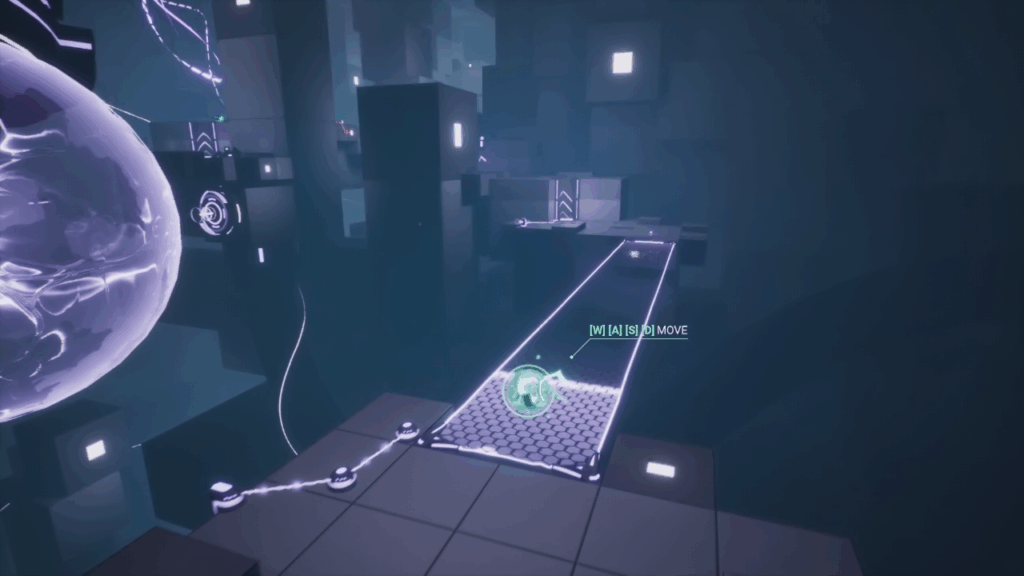
Controlling the Orb is exceedingly simple. Left- and right-handed movement inputs respectively control the Orb’s trajectory and the position of the camera in the 3D space; some of Orbyss’ puzzles require precise movement and exact timing under strict conditions, so players without the dexterity to steer a player character and camera simultaneously may struggle. A single action button prompts the Orb to interact with objects in the environment, letting it activate machines, eject itself from alcoves, and grab onto protruding pegs to haul itself up onto platforms.
The Orb’s purposefully limited actions—movement and activation—form the foundation of Orbyss’ puzzles. The earliest are rudimentary, requiring the Orb only to move from point to point and activate a few buttons along the way. The “puzzles” I solve in these earliest sequences are intended to ingrain how the Orb interacts with its environment more than challenge my intellect. An especially important mechanism introduced here are the suction-powered chutes that ferry the Orb between different locations or sometimes serve as impromptu catapults. The culmination of every puzzle is to reach one of these chutes that carries the Orb on to the next.
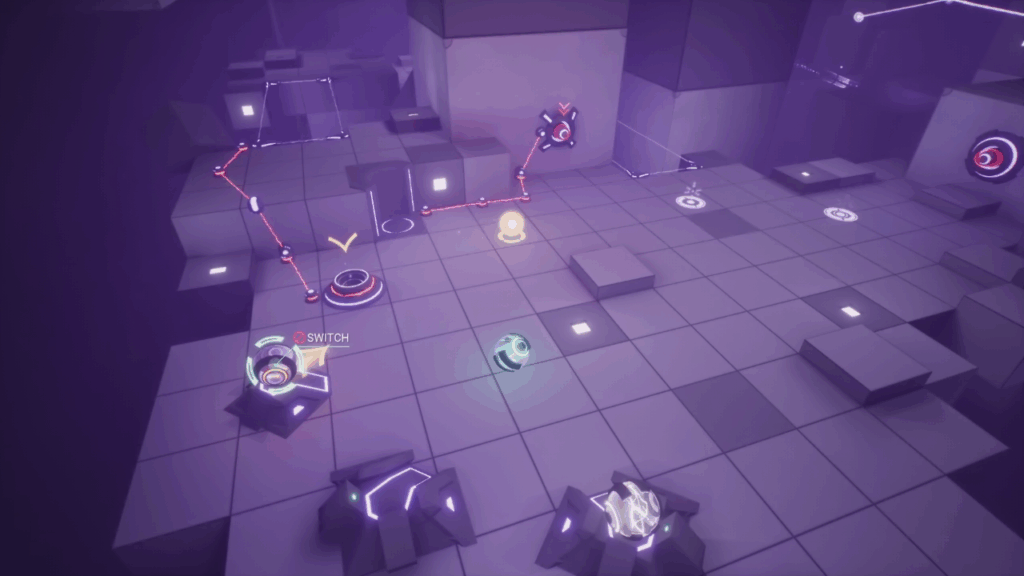
New layers are introduced to puzzles soon after I have demonstrated my prowess at steering the Orb along platforms and using it to activate buttons. Puzzles begin to incorporate multiple Orbs. Some are capable of supporting the player character entity, allowing me to swap control between multiple Orbs with a button press. Other Orbs cannot support the entity and must be dragged to mechanisms or pointed to a destination via remote control. I must use the bevy of Orbs in each puzzle to find the correct order in which to activate switches and mechanisms that allow one of the controllable Orbs to reach the chute to the next puzzle.
To increase puzzle complexity further, Orbyss’ middle chapters introduce new mechanisms to play with. Steering the Orb onto some platforms encases it inside a drone, giving it free rein to explore the entire puzzle space. Force fields keep the drone from flying outside the boundaries of the current puzzle, though some may be deactivated, expanding the number of available mechanisms and creating new avenues to reach a puzzle’s exit. It’s possible, and often necessary, to eject the Orb from the drone on distant platforms. If done carelessly, this can strand the Orb with no way to contribute to a puzzle solution. This is never a real problem. Using a second Orb to activate a pedestal at the start of each puzzle space, or simply hurling the Orb off a platform into the Construct’s depths, will cause it to reappear on the pedestal with no real penalty.
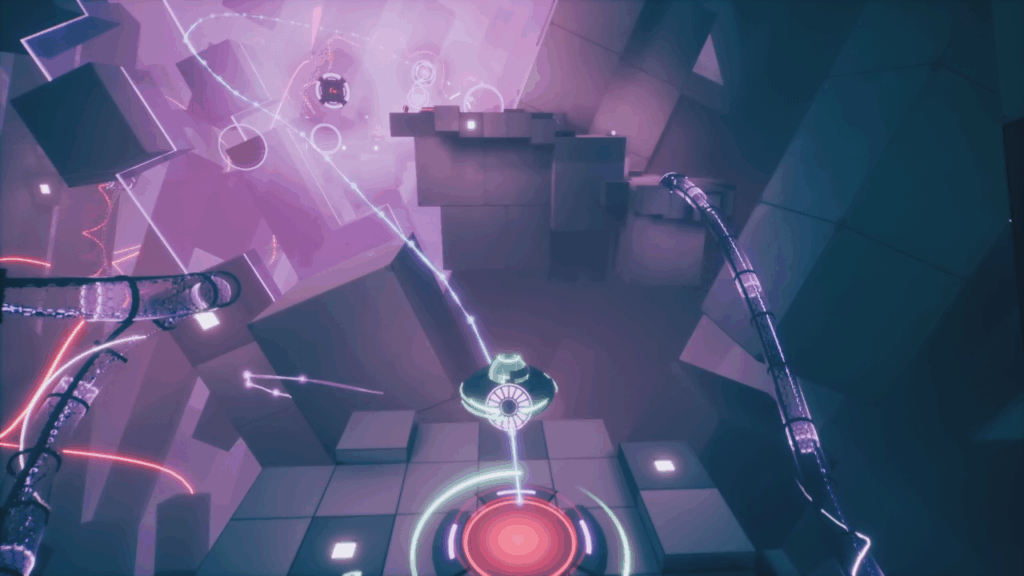
Later puzzles utilize programmable drones. Unlike the standard drones, the Orb’s time in these devices are limited. A ring-shaped display drains as soon as the Orb begins piloting the drone, and once it empties, the drone vanishes, dropping its pilot into whatever lies beneath it. The drone will remember both the path and the timing it took on its previous trip, so the next time an Orb is placed inside a programmable drone, it repeats that behavior. With careful timing and routing, it’s possible to work in tandem with actions I made several minutes before to activate multiple mechanisms around a puzzle space. Some of Orbyss’ most difficult puzzles require programming multiple drones to act simultaneously, requiring careful piloting and intuitive timing to succeed.
Another layer of puzzle solving involves sound. At multiple points in most puzzles, I must listen carefully for sound cues that nudge me towards a solution. I encounter the first of these puzzles early on while driving the Beast away from a puzzle space. The camera’s perspective freezes and locks to a section of the space highlighted by a red ring. Temporarily extracted from the Orb, my movement inputs now highlight different sections of the ring. I must meticulously search the ring for a particular sound; the closer I am to the sound, the louder it becomes. Other sound-based puzzles are better-integrated into the puzzle spaces, requiring me to match sounds being emitted by a mechanism in the environment or follow a path through multiple mechanisms using a multi-part chime as a guide.
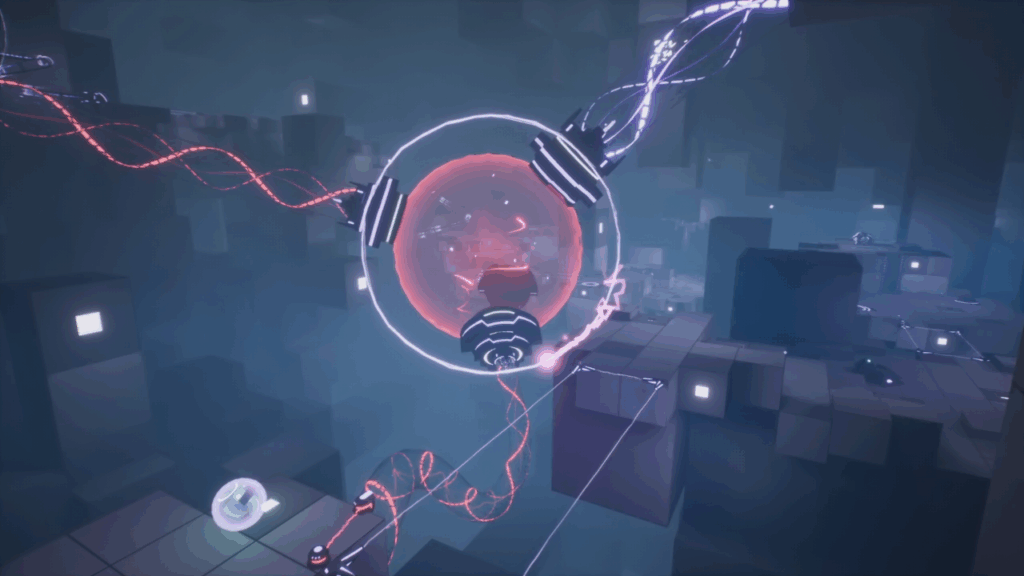
Orbyss does not leave out players who cannot physically or conveniently listen to its soundscapes. A menu option allows me to toggle visual accompaniments for puzzle components that require interacting with a sound. The menu describes these visuals as making Orbyss “easier,” and I understand this slight discouragement from enabling it. There are several puzzles where it is not immediately clear that a sound is key to solving it. If a puzzle piece suddenly has an icon floating over it, and solving sound puzzles becomes as simple as matching icons, then some of Orbyss’ ingenuity is lost. This is still preferable to not being able to play at all.
In my time playing, there is exactly one puzzle that leaves me flummoxed. I can tell what I need to do but there are not enough usable Orbs in the puzzle space to accomplish my plan. For these situations, Orbyss offers a simple hint system.
I may ask for a hint from the pause menu, though the option is disabled until after a few minutes have elapsed. This limitation requires me to put at least some effort into solving a puzzle before asking for help. Provided hints are simple, almost to the point of laconic sarcasm. When I ask for help, I am shown a single image and a simple sentence prompting me towards a solution. Either luckily or brilliantly, the hint I receive shows the exact oversight I was making in my own puzzle solution. Once I duplicate the actions depicted in the hint, the rest of my plan executes flawlessly.
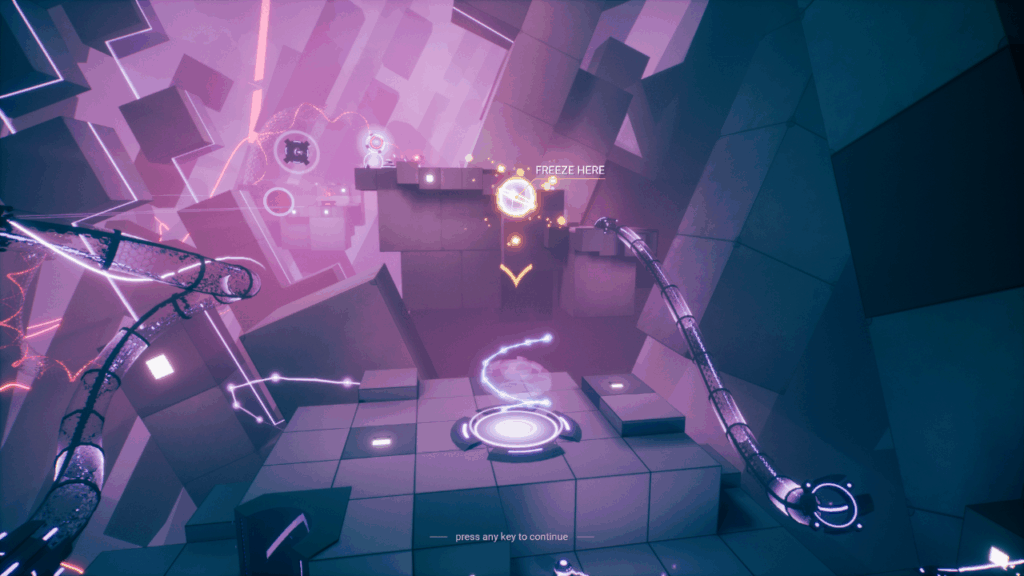
Orbyss is not a long videogame. It is divided into eight chapters, each made distinct by the structure of their puzzles more than changes in the environment or the Orb’s condition. The events of the “narrative,” if it can be called that, never leave the sterile electrical innards of the Orb’s host Construct. Even accounting for time getting stuck on the trickiest puzzles, I comfortably finish the entire videogame in about five hours.
While I am satisfied by those five hours, Orbyss does attempt to create longevity through a comprehensive suite of achievements. These number far more than I expect from a videogame of this scale. The typical achievements I expect are here, including one each for finishing all eight chapters, as well as achievements for finding and popping especially well-hidden growths left by the Beast.
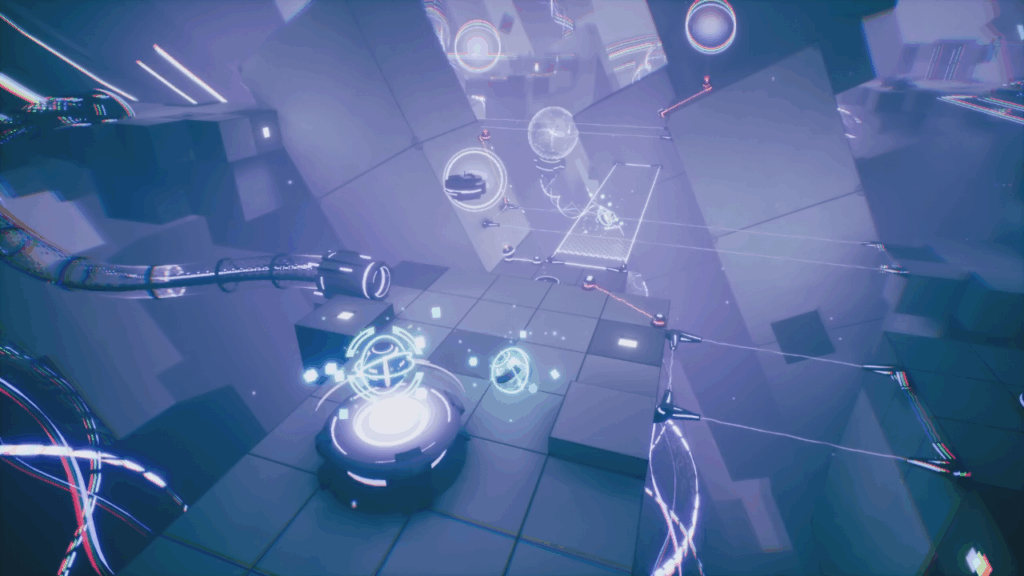
The majority of the achievements are earned for completing individual puzzles with optimal efficiency. For many, this is as simple as deducing the solution and then executing it with no mistakes. For some, it requires intricate knowledge of Orbyss’ mechanics to execute efficient maneuvers that are not immediately obvious. The ultimate achievement tasks me with guiding the original Orb, marked by a blue stripe, from the first puzzle all the way to the final confrontation with the Beast without letting it fall into one of the Construct’s voids or be destroyed by the Beast’s outbursts. Beating Orbyss takes only a few hours of time and a little bit of effort. Earning all of its achievements takes far more time and much more unorthodox thinking.
Orbyss is an abstract puzzle videogame because it does not trouble itself with explaining or contextualizing the Orb’s and the Beast’s roles or the events in which they participate. It is perhaps too specific in what it conveys to truly meet the definition of abstract. It remains inscrutable enough that the images I discern and events I guide the Orb through are open to broad interpretation.
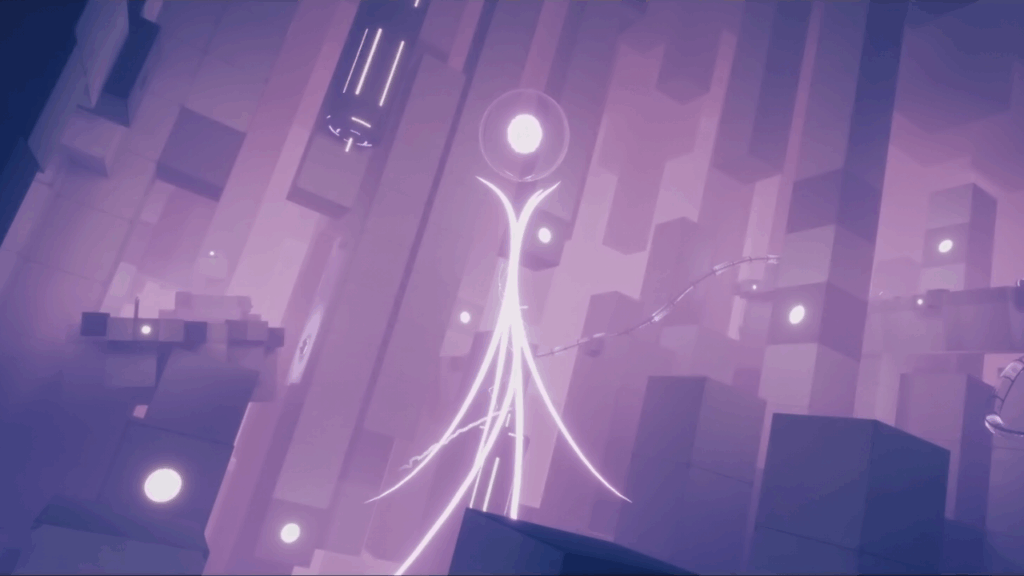
The biggest question is the setting in which Orbyss takes place. I can tell little about the Construct except that it is obviously mechanical. From its innards, I can sometimes glimpse through the dark distance a possibly-metal surface marking the space’s perimeter. Whether this space represents the entire construct or is only one compartment of many remains unknown. Even the Construct’s function is inscrutable. The intersections between its many internal points occasionally crackle with arcs of electricity; they curve and spiral, joined at several points by a bridge that makes the effect look like a strand of DNA. This suggests to me that the Construct is some kind of lifeform.
The biggest unknowns are the Orb and the Beast themselves. I can refer to them with specificity because several achievements call them by name. What their functions are within the Construct are unexplained. The Beast would seem to be an invading force. It is red, the color typically reserved for hostile forces in a videogame. As it moves around the Construct, it leaves behind growths that sprout eyes and stare at the Orb when it passes by; achievements refer to these growths as “eggs.”
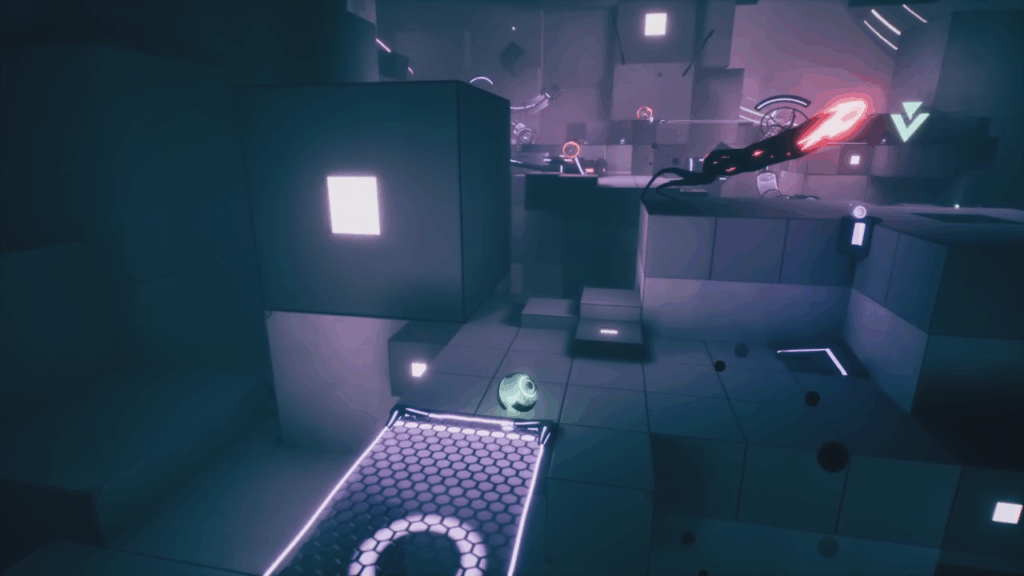
The Orb’s main purpose in solving puzzles seems to be in driving the Beast away from the Construct. The Beast will sometimes sit inside mechanisms until the Orb draws near. Most often it becomes enmeshed in an electrical field within the Construct. What is not clear is if these disruptions are purposeful or accidental. The Beast is almost certainly an invader. It exists in opposition to the Construct’s nature. The Construct is physical; the Beast is vapor or energy. The Construct, and its subordinate Orbs, function with kinetic and electric power; all of the sound-based puzzles I solve are connected to the Beast, suggesting its power is more aural than physical.
If the Construct is a lifeform and the Beast is an invader, then the Orbs seem to be the white blood cells fighting off the infection and eventually driving it out. The Orb I control is one of many I see inside the Construct. I can glimpse others on distant and unreachable platforms, solving their own puzzles. Sometimes I even have to wait for them to solve their puzzles before I may progress on my own. This makes me question the relationship between the Orbs. Do they cooperate through camaraderie, solidarity, or from a complex biomechanical process ensuring their host organism stays alive? I can theorize, but I cannot know for certain. Orbyss does not provide enough information for me to know for sure. In this way, it is abstract.
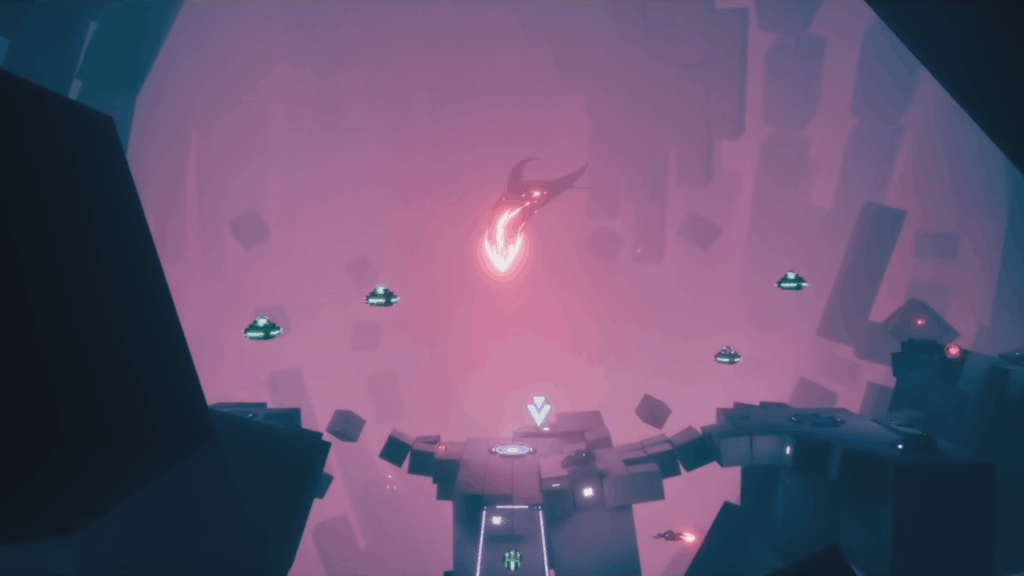
Orbyss finds a great balance in everything it does. It introduces new concepts at a perfect rate. Just when I have mastered a concept, it introduces a new twist or a whole new mechanism to keep me engaged. It is not too easy or too difficult; across all eight chapters, I only get stuck on one puzzle, and once I ask for a hint, I give myself a dope slap for how obvious the solution is. It is neither too short nor too long; I am able to finish all of its puzzles in five hours. If I decide that I would like the experience to last longer, there are a large number of challenging achievements to strive for. Its setting and the forces within it are concrete enough to be intriguing, but still vague enough that their purpose and actions could apply to a wide array of possible interpretations. Mine is just one possible theory. Maybe it is the Orbs who are the invaders and the Beast a desperate homeowner under siege by pests. There’s plenty here to keep me engaged and entertained without becoming overwhelmed. It’s the best kind of puzzle videogame: One that makes me feel smart but never makes me feel dumb.